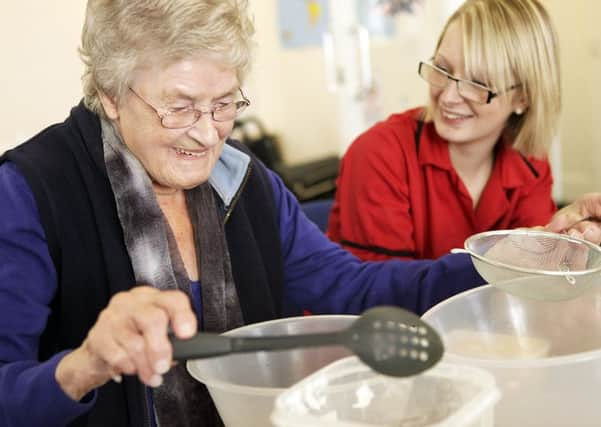Leader comment: High price to be paid for low status of care workers


The consequences have been clear for some time. An older population, requiring more looking after than before, will be expensive. We also know that the costs of care will be lower if the elderly can be kept in their own homes for as long as is practically possible, instead of in care homes or in hospitals.
This is a scenario that requires careful forward planning, and regular monitoring.
Advertisement
Hide AdAdvertisement
Hide AdUnfortunately, we don’t start out on this journey from a position of strength. Care workers are poorly paid, and a survey we report on today shows that recruitment and retention of staff is a major problem, with more than three quarters of care homes having staff vacancies and almost nine in ten of care at home and housing support services in the same position.
This presents three serious difficulties. First of all, it means that we simply do not have enough workers to look after those in need of care. Secondly, the lack of staff means that those in hospital who are able to go back to their own homes or to a care home cannot do so, leaving them unable to leave beds that are needed by others. And thirdly, the shortage means that one of the most important aspects of successful care provision – continuity of personnel – cannot be achieved.
The survey has found that one in five staff leave every year, and we can be confident that many of those who leave the care sector do so because of the level of salary . It was only last October that the introduction of the Scottish Living Wage started to make a difference, and this demonstrates how low on the scale we have valued care workers’ contribution.
Care workers who look after the elderly perform duties most of us would struggle to know how to begin to carry out properly. They deal with private matters, complex personalities, irrational behaviour, and life-threatening conditions. They might also be responsible for ensuring a person is eating, and prompting medication. If they fail to spot a problem or miss one of their routine responsibilities, they might be reported to their employer.
Paying virtually minimum wage for such a role is not enough, and until care workers feel they are valued in their role, we will continue to have recruitment and retention problems. And as the numbers requiring care increase, this position will reach breaking point.
This will in turn place impossible pressure on our hospitals, and whatever we are ‘saving’ on wages will be more than offset by the additional financial burden placed on the NHS.
Health secretary Shona Robison acknowledges that “raising the status of social care as a profession ... is key to delivering quality care”.
Paying the Living Wage to adult care workers is a start, but it may not be enough. If there is no improvement in a year’s time on the figures reported today, further action will be required to fix a problem that is storing up trouble